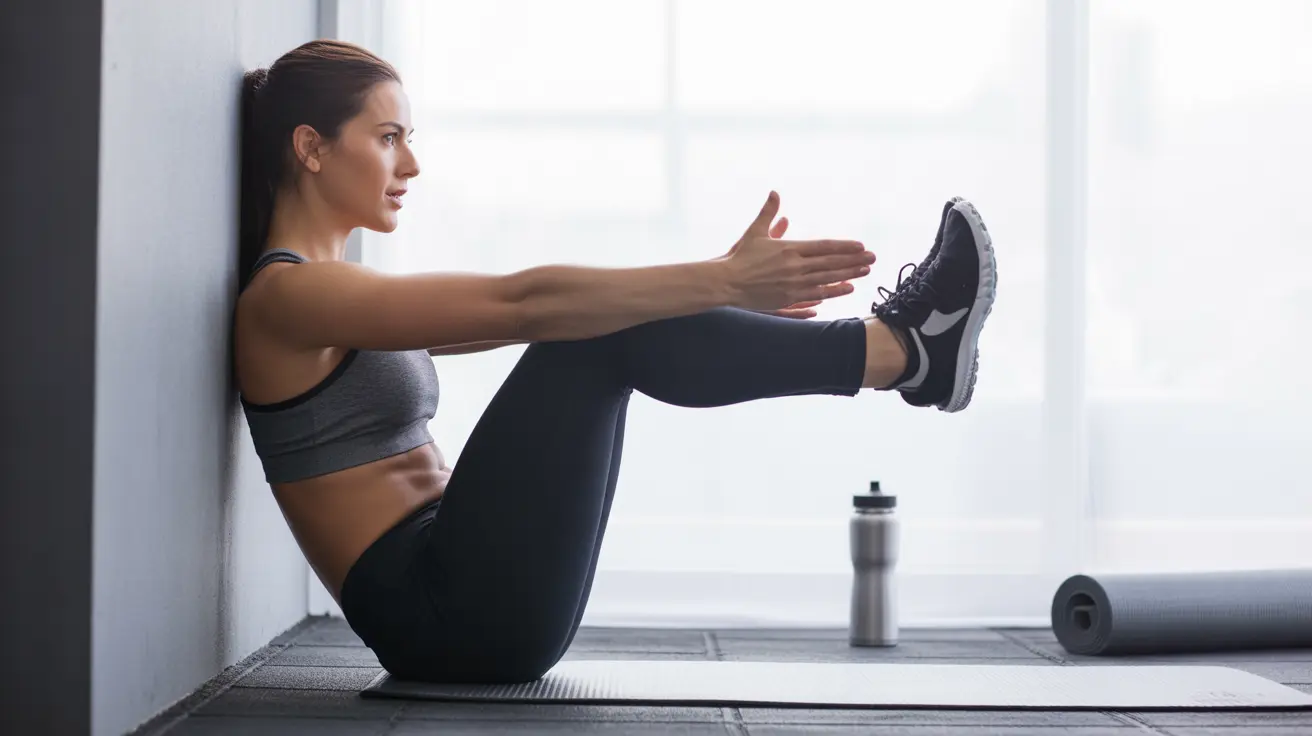Looking to strengthen your lower body and core with a simple yet effective exercise? A sit workout, particularly the wall sit exercise, offers an excellent way to build muscular endurance and stability without requiring any special equipment. This comprehensive guide will explore how to properly incorporate wall sits into your fitness routine and maximize their benefits.
Whether you're a beginner or an experienced fitness enthusiast, understanding the proper technique and benefits of wall sits can help you achieve your fitness goals more effectively. Let's dive into everything you need to know about this powerful exercise.
Understanding Wall Sits and Their Benefits
Wall sits are an isometric exercise that primarily targets your quadriceps, hamstrings, and glutes. By maintaining a seated position against a wall, you engage multiple muscle groups simultaneously, making it an efficient strength-building movement.
Key benefits of incorporating wall sits into your routine include:
- Improved lower body strength
- Enhanced core stability
- Better posture and balance
- Increased muscular endurance
- Low-impact exercise suitable for most fitness levels
Proper Wall Sit Technique
To perform a wall sit correctly and safely, follow these essential steps:
- Find a flat wall and stand with your back against it
- Slide down until your thighs are parallel to the ground
- Position your feet shoulder-width apart
- Keep your back flat against the wall
- Hold your arms at your sides or straight out in front
- Maintain a 90-degree angle at your knees
Remember to keep your core engaged and breathe steadily throughout the exercise. Start with 20-30 second holds and gradually increase duration as you build strength.
Incorporating Wall Sits into Your 7-Minute Workout
Wall sits can be an excellent component of a quick, effective workout routine. When part of a 7-minute circuit, they provide an intense lower body challenge while allowing other muscle groups to recover between different exercises.
Sample 7-Minute Circuit Including Wall Sits
- 30 seconds of wall sits
- 30 seconds of push-ups
- 30 seconds of jumping jacks
- 30 seconds of plank hold
- 30 seconds of mountain climbers
- 30 seconds of wall sits (second set)
- 30 seconds of burpees
Progressive Training and Safety Tips
To make the most of your sit workout routine while avoiding injury, consider these important guidelines:
- Start with shorter hold times and gradually increase duration
- Maintain proper form throughout the exercise
- Listen to your body and avoid overtraining
- Keep your knees aligned with your ankles
- Stop if you experience any sharp pain
Frequently Asked Questions
- What is a sit workout, and how does the wall sit exercise benefit my legs and core?
A sit workout featuring wall sits is an isometric exercise that strengthens your quadriceps, hamstrings, glutes, and core muscles. It improves muscle endurance, stability, and posture while requiring minimal equipment and space.
- How do I properly perform a wall sit as part of a 7-minute workout routine?
Position yourself against a wall, slide down until your thighs are parallel to the ground, and maintain a 90-degree angle at your knees. Include 30-second wall sits within your circuit, alternating with other exercises for a complete workout.
- Can the 7-minute sit workout improve muscle endurance and help with weight loss?
Yes, wall sits can improve muscle endurance by challenging your lower body muscles through sustained contractions. When combined with other exercises in a circuit training format, they can contribute to calorie burn and support weight loss goals.
- Is the 7-minute workout safe for beginners or people with joint or back problems?
Wall sits are generally safe for beginners and can be modified based on individual needs. However, people with existing knee, hip, or back conditions should consult their healthcare provider before starting. Start with shorter durations and focus on proper form.
- How often should I do wall sits and the full 7-minute workout to see fitness improvements?
Aim to perform wall sits and the complete 7-minute workout 3-4 times per week, allowing at least one day of rest between sessions. Consistency is key for seeing improvements in strength and endurance. Adjust the frequency based on your fitness level and recovery needs.




